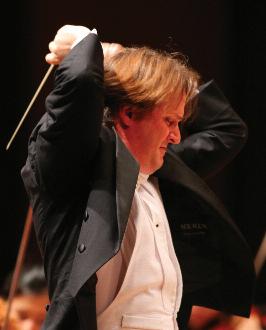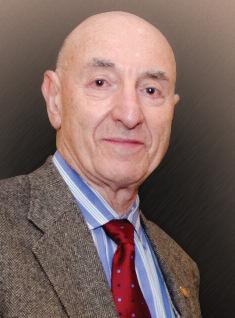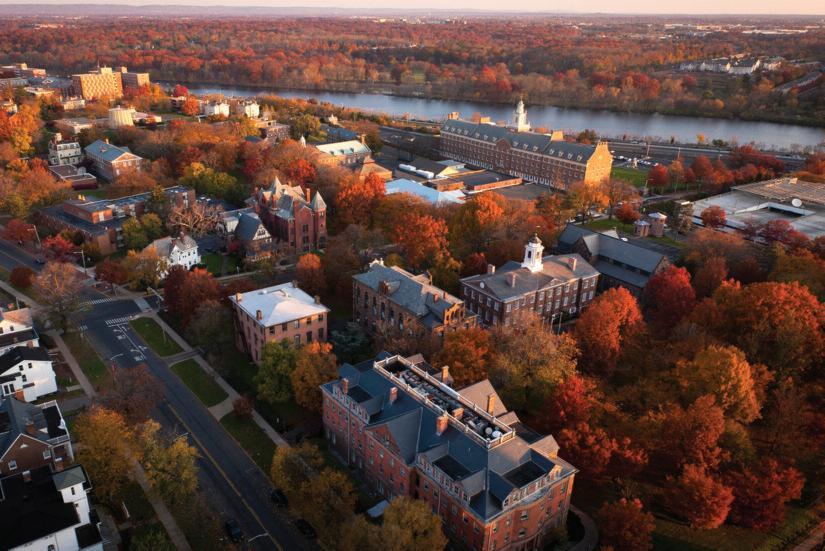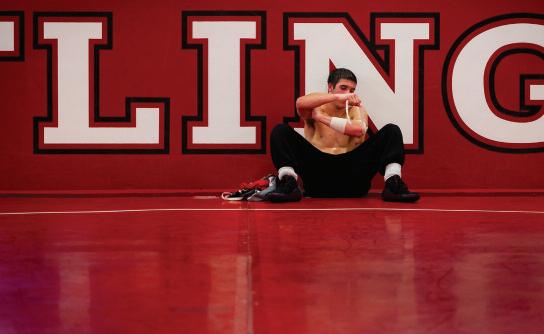
6 minute read
Ask the Expert: Conducting
Ever wonder about the role of the conductor and how he or she affects the music? Kynan Johns is Director of Orchestras here at Rutgers University, as well as director assistente to Maestros Lorin Maazel and Zubin Mehta at the Palau de les Arts Reina
Sofia opera house and cultural center in Valencia, Spain. Johns has conducted orchestras around the globe, including the Israel Philharmonic, Vienna Chamber Orchestra, Chinese National Symphony Orchestra, and the Sydney and New Zealand Symphony Orchestras. Here he talks about wielding the baton: Why is a conductor essential? It’ s useful to associate it with a sport; why does a football team need a coach? The orchestra is the football team. Everyone in the orchestra has his or her own idea about how the music should go, how to approach
Advertisement
the opposition. You need to bring the team together with communication, vision and to communicate your goals to execute that. The music, like the ball, is [what] you must get to the other end of the field. There ’ s many ways to get there. The conductor decides the tempo, tries to work out the overall architecture and matters of aggression or sensitivity. How does a conductor affect the music? The first, primary role of the conductor is to choose the speed. It’ s impossible for the musicians to hear one another totally on opposite ends of the stage. The conductor is the focal point. There are also the matters of dynamics. Sometimes you need a trainer to push you the extra mile. The conductor ’ s role is to lead and know the strengths of whom they ’ re leading. The conductor is pushing the musicians to their extremes. He ’ s the CEO.


PHOTOS BY LARRY LEVANTI
What is the difference between a good and bad conductor? The technical aspect is important—being clear so the players know when to play. Your gestures must be clear. The second role is a question of personality—how to inspire or influence people you are leading. Do you lead by consensus, or do you have a vision and lead people toward that vision? I think the jury is still out on that. When you can gain consensus, you are happy for it. But the conductor has the ultimate responsibility for the piece. You have to believe in your vision. If not, no one will follow you. —LG Watch Johns conduct the Rutgers Symphony Orchestra at the Gala Welcome concert 7:30 p.m. Oct. 6, 2012, at Nicholas Music Center.


Why I came to Mason Gross
Plenty of people just didn ’t get it.
“A lot of my friends at small schools said I was crazy to go far away from home and attend a big school [like Rutgers], ” says Briana Paparozzi, 19, a second-year BFA Visual Arts student from Charleston, S.C.
But Paparozzi was determined.
“That’ s what college is about—trying something new, ” she insists. “I wanted big opportunities. ”
One of those “big opportunities ” includes studying and making art just 40 miles from New York City.
“New York is a whole world in itself, ” says Paparozzi, who won the 2011 Rutgers Alumni Club of South Carolina Robert E. Johnson Scholarship and is the recipient of the university ’ s $10,000-a-year James Dickson Carr Scholarship. “I can go to art galleries, get new ideas. ”
But Paparozzi says she is especially energized as she encounters such a wide range of people at Rutgers.
“On the Rutgers campus, you see different ethnicities, people skateboarding, art kids. It’ s such a big group of people, there ’ s something new every day, ” she says. “Knowing it was a big campus and that there were so many opportunities—I wanted to take advantage of that. ” —LG
Q & A with Ira Lomench, Advancement Council Member
Advancement Council member Ira Lomench (UCNB ’88) has been an opera buff since childhood. His all-time favorite: Giacomo Puccini’ s La Bohème. Lomench, who works at the brokerage firm Morgan Stanley Smith Barney, describes the music from the opera as “ very sweet, melodic and emotional” and says he goes to see it every year. Lomench says he was inspired to join the Mason Gross Advancement Council when he began attending concerts and operas on campus. “I saw the high quality of these professional events and wanted to be a part of it, ” he says. Here Lomench speaks about why he continues to support Mason Gross:

LAUREN GUILIANO PHOTOGRAPHY Q: Why did you get involved with the
Mason Gross School? A: I have always had an interest in opera, and the expanding program in opera preparation for students at Mason Gross really piqued my interest. Mason Gross applies rigorous standards to selecting students. I wanted to fund scholarships for students in the professional areas I have an interest in. Q: What makes the opera program at
Mason Gross special to you? A: The high level of professionalism that these students exhibit, and the quality of their voices with the hope of them achieving even greater heights. Q: Why do you love opera? A: My mother was a pianist for silent movie houses. She played her entire life. When I was 14, she took me to my very first opera, at the Met [in New York City]. I don ’t remember which opera it was, but
I remember that the music was very melodic. I went maybe twice with her, and it has been a love of mine ever since. Q: How do you hope your generosity impacts our opera program and specifically your opera scholarship recipients? A: I hope to see over the course of time the program becoming bigger and more successful so that others will be persuaded to donate to this wonderful undertaking. Q: Final words? A: I hope that my interest in the opera program becomes contagious and spreads to other potential donors. —RRS

Picturing Rutgers

Visual Arts alum Matt Rainey offers a fresh perspective on the university via a collection of compelling photographs published in the Our Rutgers, Our Future Mid-Campaign Report. The publication provides an update on the university ’ s $1 billion capital campaign, Our Rutgers, Our Future: A Campaign for Excellence, launched in October 2010. The campaign is slated to end in 2014, and as of June 30, 2012, Rutgers University has raised $655.9 million in cash. The Mason Gross School has raised more than $20 million. Rainey generously donated a portion of his photographer ’ s fee to the university. Take a look at a few of the scenes he captured around the New Brunswick campus.









